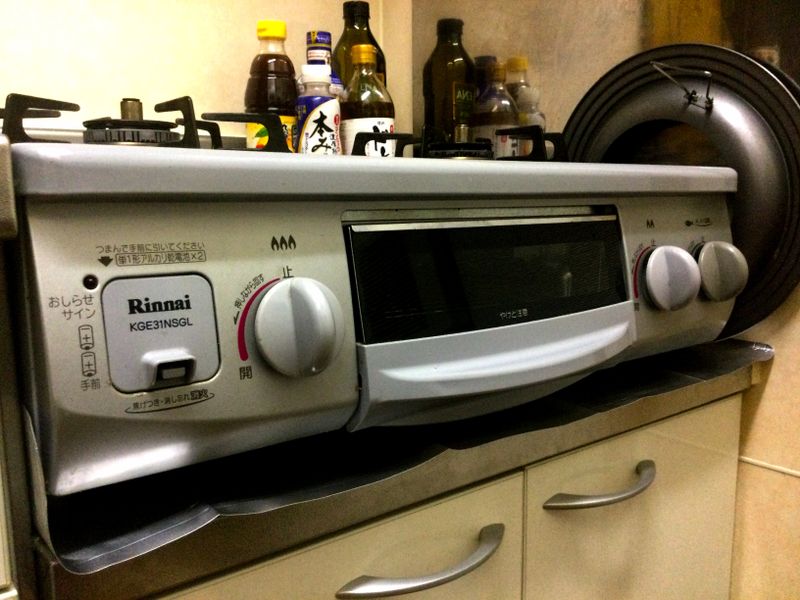Dec 28, 2023
Gas table health and safety
One of the biggest differences between my kitchen in the old country and Japan is the ubiquity of gas tables. In my native Canada, virtually every rented accommodation I lived in had a stove with four electric burners and an oven. Not so here. Very few of the rented houses and apartments I’ve lived in, and even workplaces, had electric stoves.
An amazing appliance
At first, I was scared of using the gas stove since I had little experience with them. But eventually, I warmed up to it. Most of the Japanese kitchens I’ve cooked in have a two-burner gas table with a fish grill mounted below the burners. They’re marvelous - some of them have great safety features such as child locks, timers, or automatically turn off when the kettle has boiled.

My gas table with two burners and a fish grill
A gas table feature
As fellow City-Cost blogger Jtsu learned through the experience of dealing with batteries, gas tables are connected to gas lines (either city gas or liquified petroleum or LP gas tanks) but not electrical. Gas tables usually have two large batteries for the ignition. This means that, even if the electricity fails, you can still have a hot meal if you’ve got gas.
Health concerns about gas tables
International and Japanese media have picked up on the suspected health impacts of gas stoves. Earlier this year, The Japan News reported on American and Australian research that suggests that children in homes with gas stoves have a higher rate of asthma. When you burn a substance indoors, you’re going to get fine particulate stuff and gases including nitrous oxide.
Augmenting your gas cooking with appliances
So how do you maintain the air quality in your home? Harvard Health states the obvious - switch to electric. If you have a typical Japanese kitchen like mine, you’ve likely got an electric kettle, a microwave range, and/or a toaster oven. These kitchen tools do a lot of work. But for both long and quick cooking tasks the gas table is it.
Less gas, better indoor environment
When cooking in the summer, I avoid not only heating the kitchen and laborious dishes but also the amount of fuel and fumes. I beat the heat with summer dishes including quick-cooking noodles and pickles. In preparation for cooking soba, somen, and udon, I boil water in the electric kettle so that I use less LP gas. I also tell you in that blog about my pasta hack - covering noodles with cold water in the frying pan to reduce the cooking time.
Ventilation
I grew up in western Canada in a climate so different from Japan. And home heating and cooling systems are very different, too, with forced air and heated floors the norm in Canada. Here, most homes depend on aircon units and kitchens have both range hoods and vents. I was surprised by the louvered vents in each room (built in the 2010s). In winter, they are a heat leak, but vital for warm months to keep indoor air fresh. Every time you cook, turn the range hood on and make sure you've got the wall vents open.
Do you reduce the amount of cooking you do on the gas table? Do you have techniques to share?



0 Comments